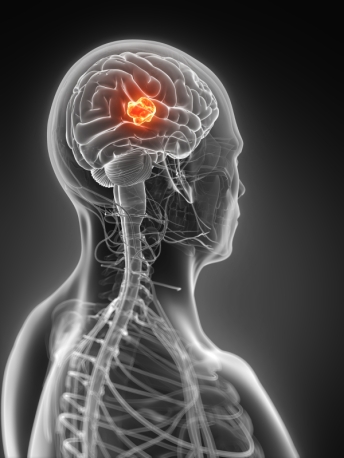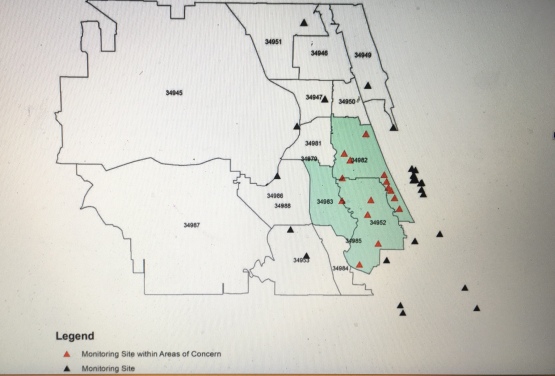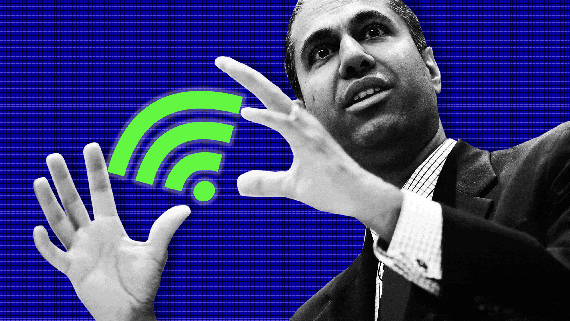
In February 2019 The Florida Department of Health (FDOH) released a “St. Lucie County Cancer Assessment.”
FDOH’s cancer assessment was undertaken to address community concerns, initially comprised of a local glioblastoma support group. While questioning the number of glioblastoma cases reported to be occurring, concerned citizens specifically questioned if there were higher rates of glioblastoma among individuals younger than 40 years of age and in the geographic areas of zip codes 34982, 34983, and 34952.
The number of observed cases for zip codes 34982 (primary area of concern) and zip codes 34952 and 34983 (secondary areas of concern), and the state age- specific rates from 1998 to 2017 for glioblastoma were gathered from the Florida Cancer Data System (FCDS), Florida’s statewide cancer registry.
According to the FDOH Assessment, “A glioblastoma case was defined based on the International Classification of Oncology, 3rd edition (ICD-O-3) histology codes 9440, 9441, 9442, 9445, 9450, 9451 and Behavior 3.”
Two time periods (1998-2007 and 2008-2017) were examined for the assessment.
Although the Assessment referred to “cancer cluster” as a greater than expected number of cancer cases that occurs within a group of people in a defined geographic area over a specified period of time, it did not report that zip codes 34982, 34983 and 34952 represented a cancer cluster.
Glioblastoma, also known as glioblastoma multiforme, is the most aggressive cancer that begins within the brain.

The following are “Observed” and “Expected” cases in the three zip codes.
Observed cases are the number of cases found within the Florida Cancer Data System (FCDS) for the area of concern. Expected cases are calculated based on the age-sex population gathered from the 2000 and 2010 U.S. Census, respectively, for the suspected areas of concern and the state age-sex specific rates obtained from the FCDS.
FCDS is Florida’s statewide cancer surveillance system. It is legislatively mandated to collect incidence data on all cancers diagnosed in Florida per Section 385.202 Florida Statute.e 1981.
Here is the data on the “Standardized Incident Ratio (SIR) for Glioblastoma” among females and males by the 34952, 34982 and 34983 St. Lucie County zip codes:
FEMALES:
1998 – 2007
Zip code Observed Cases* Expected Cases
34952 8 8.3
34982 4 4.6
34983 7 4.
2008 – 2017
34952 12 9.8
34982 3 4.0
34983 4 6.5
MALES:
1998 – 2007
34952 17 10.5
34982 7 5.9
34983 4 6.7
2008 – 2017
34952 13 12.5
34982 6 6.1
34983 11 8.9
- Observed cases are the number of cancers within the Florida Cancer Data System.
The US Centers for Disease Control and Prevention (CDC) and the National Cancer Institute both say that a cancer cluster is a “greater-than-expected number of cancer cases that occurs within a group of people in a defined geographic area over a period of time.”
However, the Assessment did not refer to incidents of Glioblastoma in zip codes 34952, 34982 and 34983 as a cancer cluster, saying “It is important to keep in mind that most investigations of suspected cancer clusters in a community or residential setting do not lead to the identification of an associated environmental contaminant.”
FDOH reviewed drinking water records from the utility companies and data available for private wells data that was available within the areas of interest in St. Lucie County. The Florida Bureau of Environmental Health did not find areas of chemical concern based upon that review.
No environmental or epidemiologic (causal) links to cancer were found.
In terms of radiation, the Bureau of Radiological Health investigators surveyed each site. The sampling and testing took over a year (1997-1998). Numerous re-samplings were conducted to assure “unquestioned and accurate results”.
Data obtained from the St. Lucie Plant Radiological Environmental Monitoring Program verified that “the levels of radiation and concentrations of radioactive materials in the environmental samples, representing the highest potential pathways to members of the public, are not being increased. Measured exposure rates are consistent with exposure rates that were observed during the pre-operational surveillance program.
Owned and operated by the Florida Power and Light (FP&L), the St. Lucie Nuclear Power Plant’s design safely keeps radiation inside the plant. Radiation releases from the plant measure less than 1 millirem per year.”
No chemical or radiological anomalies were found.
The environmental testing process began with the development of a wide range of chemicals and compounds, detailed sampling procedures, and precise testing methods at each of the focus sites (44 sites in all) and matching control location.
Samples were taken of soil, air, water, and dust and tested for over 561 different chemical and radiological compounds at a cost of $4,450 per site. Testing was done through the State of Florida Jacksonville Regional Laboratory.
“Overall,” according to the Assessment, “the occurrence of glioblastoma in the areas of concern showed a pattern in which most cases occurred over the age of 60 and among males than females as expected.
It is important to keep in mind that most investigations of suspected cancer clusters in a community or residential setting do not lead to the identification of an associated environmental contaminant given many factors, including the fact that cancer is not a single disease, but has many different forms with each form having its own etiology and risk factors.
The Department will continue to monitor cancer incidence in the suspected areas of concern.”
Radiological Environmental Monitoring Program (REMP) Sites, St. Lucie County

St. Lucie County health officials are assessing the risks for cancer in the area but have not found any evidence of a cancer cluster based on data before 2016.
“The review has found that the occurrence of glioblastoma cancer in all local areas in St. Lucie County mirrored what is to be expected given the population size and demographics,” officials said in August, “On average, each year there were 10 new glioblastoma cases for the entire St. Lucie County reported to the Florida Cancer Data System during 1996 to 2015. The majority of these cases were reported among adults age 60 or older.”
Dr. Henry Friedman, a neuro-oncologist and Deputy Director of the Preston Robert TischBrain Tumor Center at Duke University said “the only known contributor to glioblastoma is exposure to radiation.”

According to the Moffitt Cancer Center, “One of the most notable glioblastoma risk factors is prior radiation exposure…”
https://www.projectcensored.org/14-accumulating-evidence-ongoing-wireless-technology-health-hazards/
“A Kaiser Permanente study (published December 2017 in Scientific Reports) conducted controlled research testing on hundreds of pregnant women in the San Francisco Bay area and found that those who had been exposed to magnetic field (MF) non-ionizing radiation associated with cell phones and wireless devices had 2.72 times more risk of miscarriage than those with lower MF exposure.
According to lead investigator De-Kun Li, the possible effects of MF exposure have been controversial because, “from a public health point of view, everybody is exposed. If there is any health effect, the potential impact is huge.”
Multiple studies, including one published in the American Journal of Epidemiology in October 2017, have correlated long-term exposure to cell phone radiation with the risk for glioma (a type of brain tumor), meningioma, DNA damage, and other health risks. In May 2017, the California Department of Public Health released safety guidelines in response to possible health impacts from cell phone radiation. Yet this information was withheld from the public for seven years, and only released after litigation. The American Academy of Pediatrics has clear recommendations to reduce children’s exposure to cell phone radiation—yet pregnant women continue to use wireless devices on their abdomens and children are given cell phones as toys.
In May 2011, after the consideration of laboratory studies, studies of long-term use of wireless phones, and data on the incidence of brain tumors, the World Health Organization (WHO) determined RF-EMFs to be a “possible” human carcinogen. Other studies have shown an association between long-term mobile and cordless phone use with glioma and acoustic neuroma. In October 2013, Powerwatch, a United Kingdom–based watchdog focused on the health risks posed by electromagnetic fields, reported that two new research articles provide further evidence of mobile phone use as a cause of increased brain tumors.”
Glioblastoma is the same cancer that killed Arizona Senator John McCain. According to a July 20, 2017 article in The Atlantic by Adrienne LaFrance, “Senator John McCain’s brain cancer diagnosis is likely to revive a persistent and complex question about the safety of wireless technologies, like cellphones, that emit electromagnetic radiation.”
John McCain was left-handed.


Senator Ted Kennedy died from the same disease in August 2009.
Adrienne LaFrance asked: “Could there be a connection between the aggressive form of cancer in Kennedy’s brain and his cellphone usage? U.S. senators tend to do a good deal of business by phone, especially when they’re in Washington and away from their constituencies.”
She wrote: “In 2015, nearly 200 scientists from across the world signed an open letter urging the United Nations and the World Health Organization to develop stricter rules around wireless technology and public health. Their concerns weren’t limited to cellphones, but included a slew of devices like baby monitors, WiFi, cordless phones, and so on.”
Against this backdrop of conventional cell phone radiation, what will be the human impact of the deployment of 5G?
“The deployment of 5G, or fifth generation cellular technology, constitutes a massive experiment on the health of all species,” Dr. Joel M. Moskowitz, Director at the Center for Family and Community Health at the University of California, Berkeley, told the Daily Mail Online. “5G will use high-band frequencies, or millimeter waves, that may affect the eyes, the testes, the skin, the peripheral nervous system, and sweat glands … Millimeter waves can also make some pathogens resistant to antibiotics,” he added.
Meanwhile, the Chairman of the Federal Communication Commission (FCC), Ajit Pai, after recently touring various cities in Florida such Tampa and St. Petersburg, said: “One takeaway for me is that Florida is on the leading edge of 5G. Another is that there’s much the FCC can and should do to help American consumers seize the opportunities of 5G.

What’s striking, is that the Assessment noted zip code 34982 as a primary area of concern and zip codes 34952 and 34983 as secondary areas of concern. But, unless we are missing something, if you look at the above data, zip code 34952 should be the primary area of concern.
What’s missing from the Assessment is any mention of the massive FPL power lines or large cell towers in close proximity to residential areas. Also….this report is missing any mention of the National Toxicology Program (NTP) report, as well as an comparisons to other zip codes in and outside Florida.
NTP conducted toxicology studies in rats and mice to help clarify potential health hazards, including cancer risk, from exposure to RFR like that used in 2G and 3G cell phones.
What did the studies find?
The NTP studies found that high exposure to RFR used by cell phones was associated with:
- Clear evidence of tumors in the hearts of male rats. The tumors were malignant schwannomas.
- Some evidence of tumors in the brains of male rats. The tumors were malignant gliomas.
- Some evidence of tumors in the adrenal glands of male rats. The tumors were benign, malignant, or complex combined pheochromocytoma.
Related Articles:
The safety of 5G is only assumed……….
Thank you for this important article. 5G is currently being deployed in some larger Florida cities today. It has not gone live….yet. Treasure Coast citizens should be aware that the permitting process is taking place in YOUR AREA NOW. *No family suffering from glioblastoma or any serious illness should have the additional stress of a 5G millimeter wave cell in the right-of-way on their street. See: EHTrust.org
LikeLike
Pingback: 5G Poles Already Up in Vero Beach, FL. One Pole Permitted Adjacent to Rosewood Magnet Elementary School. | Vero Communiqué